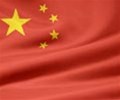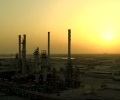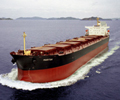China’s Policy Priorities Deliver ‘Front-Loaded’ Growth

At the start of a politically sensitive year in China, policy makers are promoting economic expansion and putting aside restructuring needed to keep debt from hobbling the economy.
A 6.4% expansion in China’s economy during the first quarter reported on Wednesday matched the pace of last year’s final quarter despite widespread market expectations — and a good deal of evidence — that growth would decelerate.
Growth did remain near three-decade lows as China digests the debt buildup and excess capacity from the frothy years of a decade ago. But economists said the quarter’s rebound in activity such as factory production indicates Beijing is unlocking cash to slow the descent.
Chinese authorities began 2019 by cutting taxes, pledging lending to small companies and ordering municipal governments to fund infrastructure construction, actions taken in response to a rapid economic slowdown late last year that frightened many business owners. The quarter’s GDP rate outpaced last year’s performance in most of the world’s larger economies, besides India and Ireland.
“Market expectations and confidence are strengthening,” Mao Shengyong, a spokesman for the National Statistics Bureau told reporters Wednesday.
Instead of shrinking sectors such as steel production and real estate that were responsible for pushing debt to 300% of the economy, China is again relying on some of these sectors to power a rebound, the latest data show.
“They can boost growth this year but at the expense of debt to GDP going up as more inefficient investment swamps the incipient rebalancing of the economy that we saw in the past couple of years,” according to Diana Choyleva, chief economist at Enodo Economics Ltd. in London.
During the quarter, Chinese factories churned out crude steel and primary aluminum at a rate rarely seen at the beginning of a year, when Lunar New Year holidays normally slow such activity. New money also went into real-estate construction and apartment purchases. Retail sales of products such as household appliances grew, along with restaurant receipts. China’s long-battered stock market even reversed.
“Right now supply and demand are both booming,” said Wang Guoqing, an analyst at Lange Steel Information Research Center. Ms. Wang said crude steel and primary aluminum output was the highest on record for a first quarter. Authorities scaled back antipollution controls, she said, allowing crude steel production to jump 10% in the quarter.
Economic buoyancy could limit the sting of comments from President Trump, who has said China’s economy is so weak that Beijing has great incentive to secure a trade deal in what may soon be the final — and most political — rounds of talks with policy makers in Washington.
China’s sustained economic growth should make it easier this month for President Xi Jinping to convince dozens of visiting heads of state that Beijing has the wherewithal to push forward its global infrastructure program, the Belt and Road Initiative. Economic expansion also bodes well for China’s busy calendar of political anniversaries, including October’s celebrations for the 70th year of rule by the Communist Party.
While credit loosened in the first quarter, China isn’t flooding the financial system, and has made its biggest impact with targeted moves to reverse last year’s slide in confidence, some economists said. “This provided the government with an opportunity to take several inexpensive steps to boost sentiment,” Matthews Asia strategist Andy Rothman said in a research note titled “The World’s Cheapest Stimulus.”
Among other measures, the government is considering steps to stimulate sales of cars, smartphones and home appliances, according to draft rules reviewed by The Wall Street Journal.
Under the draft by the National Development and Reform Commission, local governments would be asked to phase out restrictions on buying cars, and the government would offer tax incentives for car buyers and subsidies for buyers of smartphones and home appliances.
Meanwhile, China’s State Council said it is putting in place a policy framework to lower the portion of deposits that smaller banks have to put aside as reserves and not lend, in an effort to reduce borrowing costs for smaller firms, state media reported Wednesday.
Not every indicator improved in the first quarter. While an 8.5% gain in manufacturing output boosted headline GDP, private-investment growth lagged behind at 5.6%, a possible cautionary signal from individual business owners. Electricity production slumped compared with the final quarter of last year. Import growth of just 0.3% suggests weak demand in China. Car sales fell again, though down 4.4% compared with 8.5% in December. Developers bid less for land, with transaction volumes sagging more than 30% in March from the year earlier.
First quarter government spending was probably front loaded, economists said, meaning tomorrow’s money was being spent yesterday. While a reduction in value-added taxes was encouraging to business owners, it means less government revenue when authorities are earmarking new money for public works such as railways.
Li Chen, a sales representative with Fuzhou Qingcheng Irrigation Equipment Co., said the VAT cut, which took effect this month, may save her enough money to expand her operations selling farmland equipment as far away as Russia and South America. “We hope such momentum can be kept up,” she said.
Source: Dow Jones

 Hellenic Shipping News Worldwide Hellenic Shipping News Worldwide, Online Daily Newspaper on Hellenic and International Shipping
Hellenic Shipping News Worldwide Hellenic Shipping News Worldwide, Online Daily Newspaper on Hellenic and International Shipping























 PG-Software
PG-Software